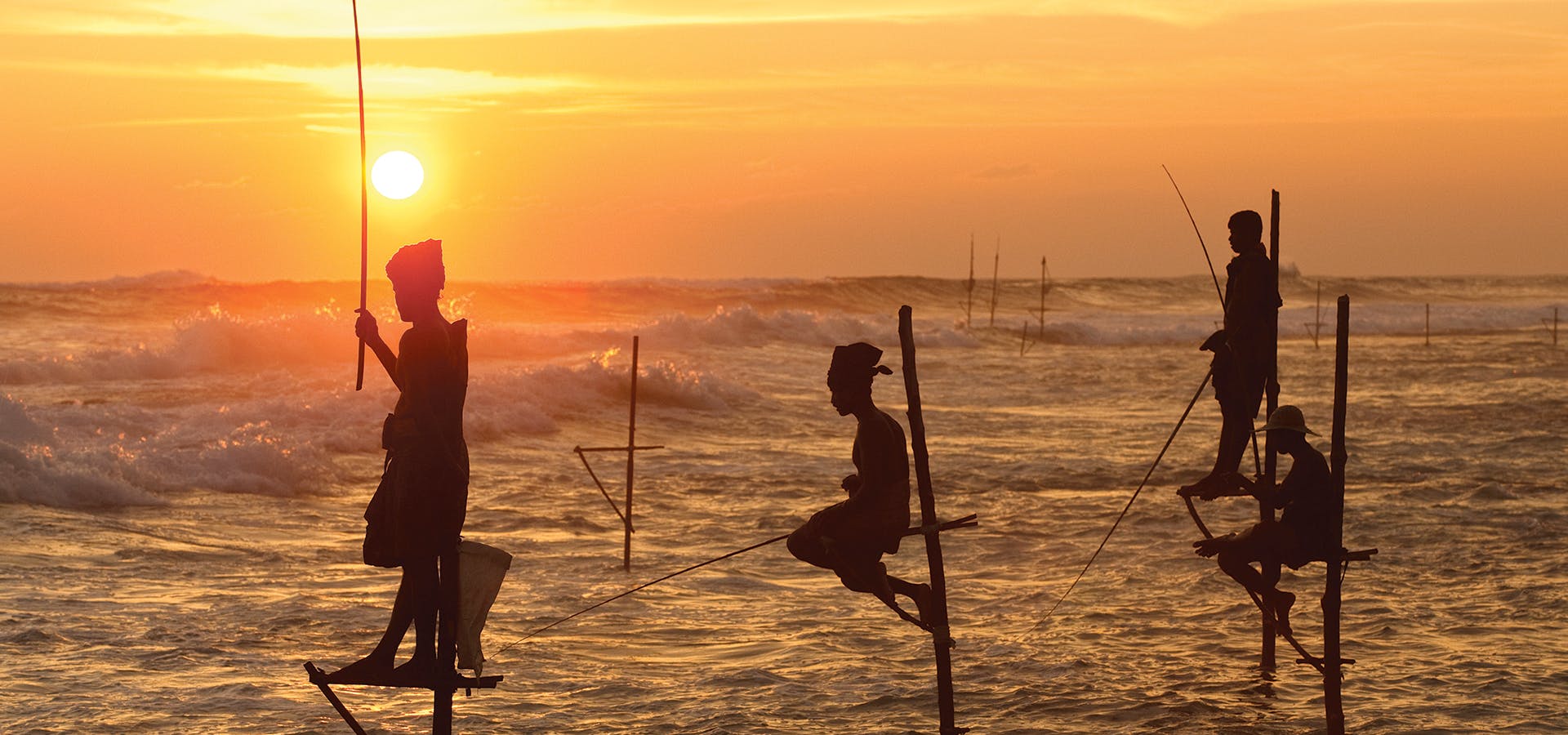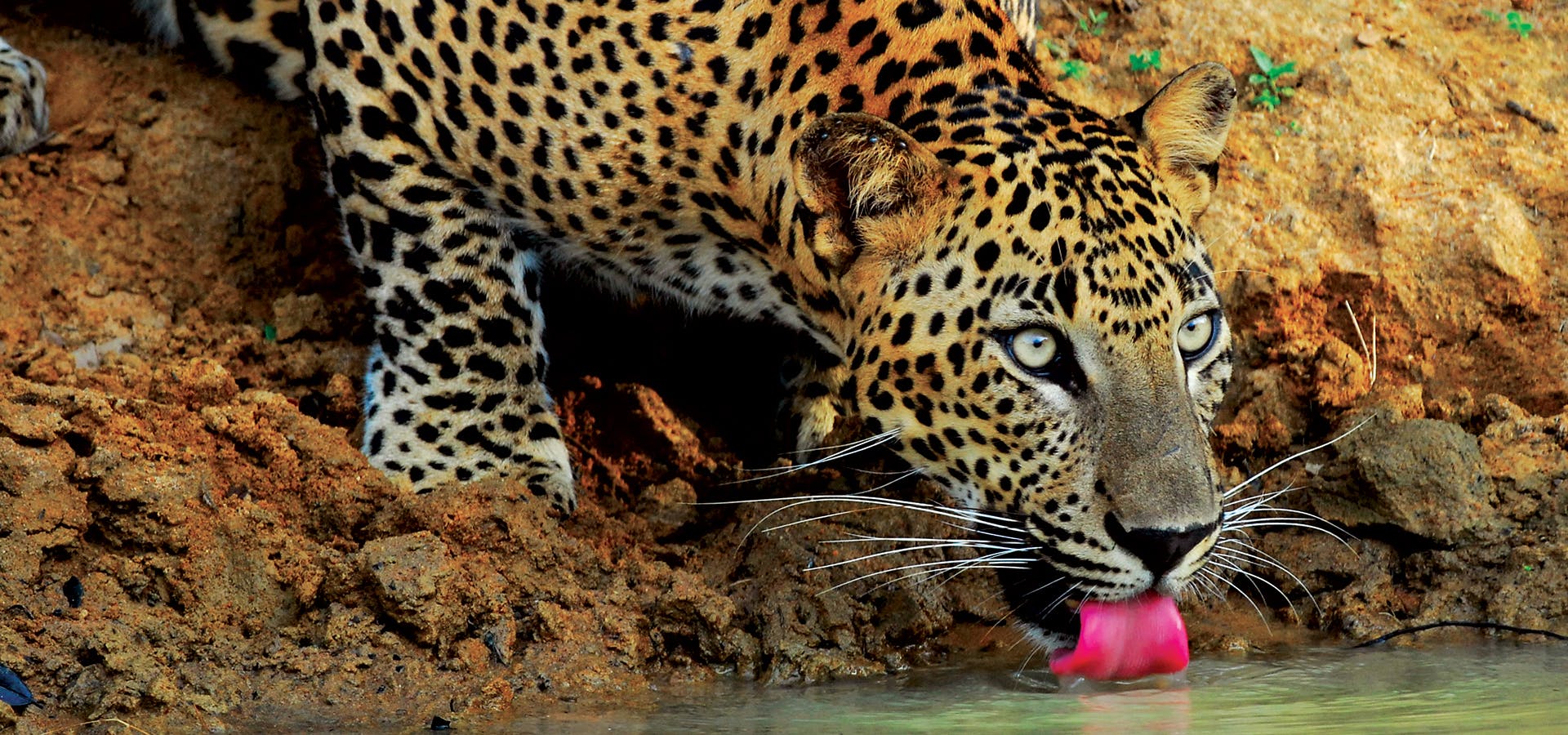
We had been warned that wild Sri Lanka is not to be underestimated.
With possibly the best views of Sri Lanka’s crisp Hill Country, Camellia Hills’ luxurious five-bedroom hotel is nestled among tea plantations, overlooking the famous island-dotted Castlereagh Reservoir. Beyond the luxurious bungalows and stunning views, the boutique sensation is also a popular springboard to one of the country’s most meaningful and heart-racing climbing experiences. At the sight of our guide’s bare feet and flip flops, my husband and I impulsively tossed aside our matching his-and-hers leech socks and the recommended impenetrable wellies. Surely our hiking boots would do.
There are around 5,500 steep steps on the way to the top of Sri Pada (a.k.a. Adam’s Peak), the fifth-tallest but most sacred mountain in Sri Lanka. For over a millennium, the Peak has been a mecca for people of various beliefs on the island. Sri Pada, meaning “sacred footprint,” is believed to have been left by the Buddha when he was going to paradise. For Hindus, it is Lord Shiva’s footprint. When asking Christians and Muslims, they would say it is the footprint of Adam as he was banished from the Garden of Eden.
Today, thousands of pilgrims and visitors alike climb in the dark together, with only candlelight and the full moon to guide their slow and steady way. Backs sore, legs burning, they carry on for hours up the lush green mountain until they’ve reached the summit. Their reward? A sense of triumph unlike any other, as one of the most gorgeous sunrises imaginable slowly illuminates the endless waves of mountains in every direction. There are times like this when Sri Lanka is so unbelievably gorgeous it can be overwhelming. Will it stop at skin deep? Don’t bet on it.
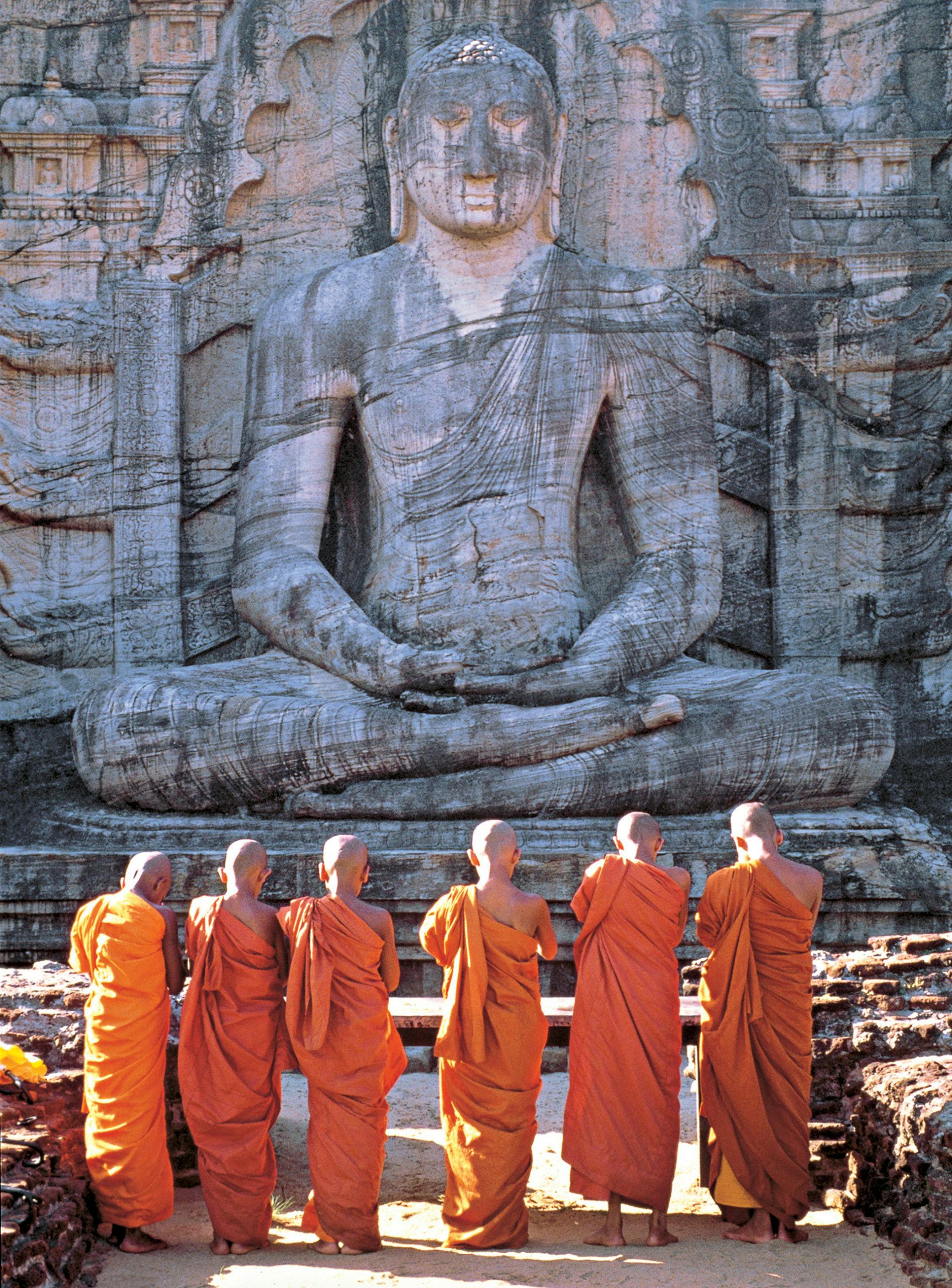
Leeches wait on jungle vegetation, ready and eager to attach themselves to clothes and then lower legs, where they can weave their way through socks and into trekking boots, often locking down, breaking the skin, and making a meal of one’s feet. We stopped to hydrate and watched our guide casually flicking hundreds of slithery critters off his exposed skin. We looked a bit fearfully into each other’s eyes and then we looked down.
When faced with slippery, blood-sucking little devils crawling all over you, there’s a moment of relief that they are far smaller and more harmless looking than imagined. Yet knowing their life’s purpose is to break the skin and gorge on blood, we began hopping around like fools trying to shake them off, followed by hours of reassuring examinations and picking at each other like two monkeys. No first-world freak-out; just another utterly foreign experience conquered together. It left us laughing in a way that felt new, full of reckless abandon, a dash of romance, and total disregard for any kind of care in the world.
A rare, once-in-a-decade epic journey like this is best when active and engaged, never scripted nor sterile. That said, being temporarily soaked, muddy, lost, and/or hysterical came with the territory.
Did I lose you at leeches? Let me assure you: Take a chance on Sri Lanka. It will deliver.
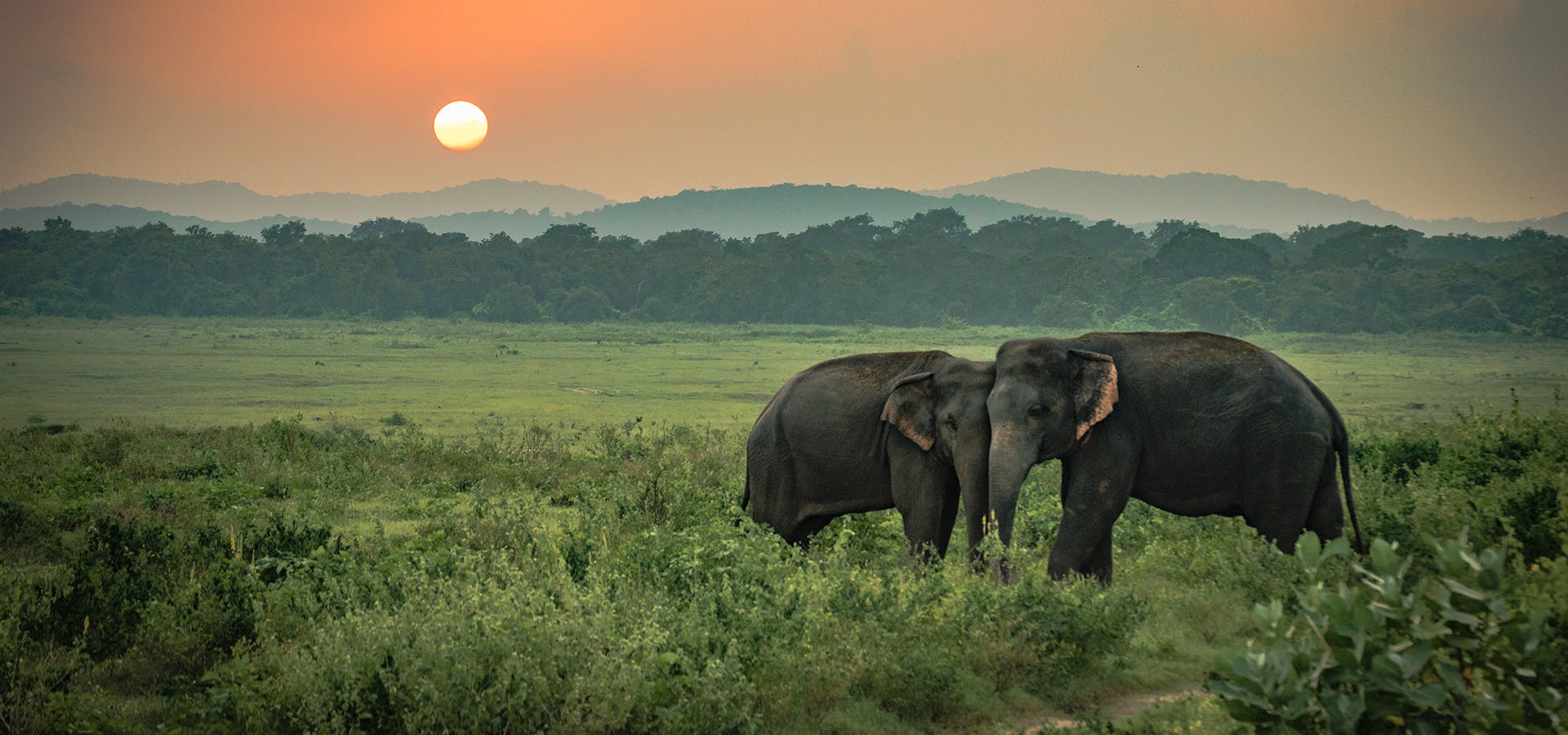
The Background
When Ananda Dissanayake moved from rural Sri Lanka to the capital Colombo as a young teen, he found his first job in hospitality as a kitchen aid in a popular hotel, making $4 a month as a kitchen helper. In 2019 at the age of 53, having advanced to expert naturalist and tour guide, he felt he had finally hit the jackpot. His native land was no longer a best-kept secret; visitors from all over the world were arriving daily to enjoy the country’s endless beaches, timeless ruins, welcoming people, killer surf, flavorful food, newfound peace, and improved infrastructure.
Tourism was doing more than putting food on the table. Ananda could finally afford a few personal priorities—a stylish wardrobe, second vehicle, and construction of new guesthouse facilities on his property to supplement his income. He delighted in spoiling his wife and four daughters with the finer things like two expensive imported kittens, Bella and Beeshu, and a new swimming pool.
Then, Sri Lanka suffered a series of bombings on Easter Sunday, 2019.
Hurricanes, fires, floods, and terrorist attacks—acts of god and people can bring even the most vibrant and sophisticated destination to its knees. After the bombings in Sri Lanka, the flow of travelers to the once-coveted island destination was reduced to a trickle. Half-a-million families across the island could no longer count on tourism for daily living. Fortunately, people around the world wanted to help. But how?
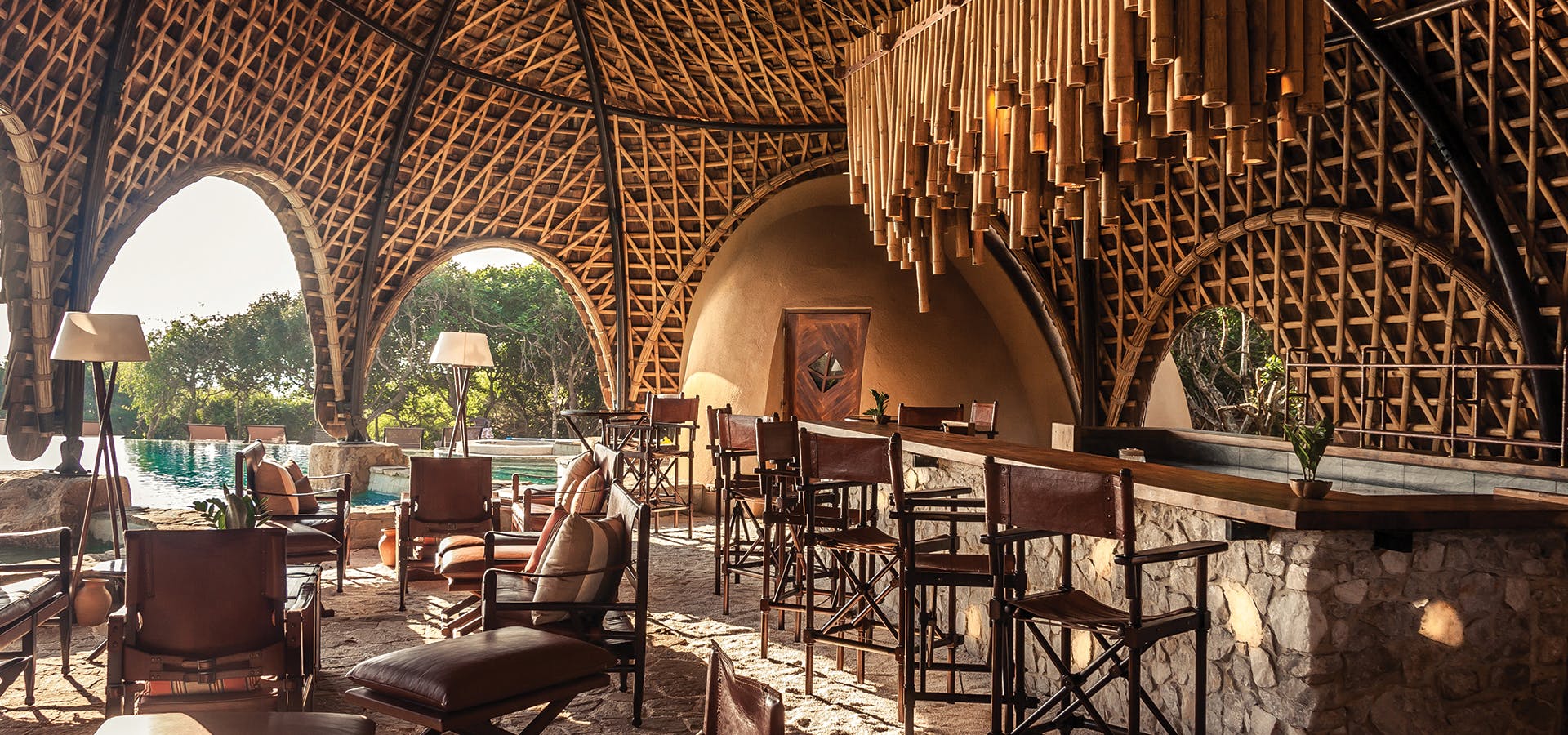
Above: Photo Courtesy of Wild Coast Tented Lodge
The California Connection
Scott Dunn Expedition Specialist Lauren Duran is my kind of no-guts-no-glory woman. At the adventure outfit’s U.S. headquarters in Southern California, Lauren spends her days expertly masterminding bespoke global excursions around the globe for couples, families, solo artists—no matter your travel time, speed, or endgame. Time in the field isn’t fantasy for Lauren and her colleagues at Scott Dunn; it is a key component in the company’s wildly successful DNA.
Post-bombings in Sri Lanka, the California native and avid surfer hit the ground running on behalf of Scott Dunn, proudly showing support, fine-tuning her local knowledge, and fortifying solid relationships and employment with the country’s most experienced operators. No trip comes without risk, but with Scott Dunn’s expert pre-trip protocol, detailed itineraries, state-of-the-art technology, and agile experts on the ground, even the most exotic destinations can be explored and enjoyed.
As Lauren and her colleagues have keenly identified, choosing to visit destinations on the road to economic recovery—like Sri Lanka—stands for something. In the aftermath of the media frenzy and travel warnings, there are real people striving to get on with daily life. Real people in tourism and other industries in need of work. Why visit any number of overcrowded destinations, when Sri Lanka is once again open for business and eager to thrill?
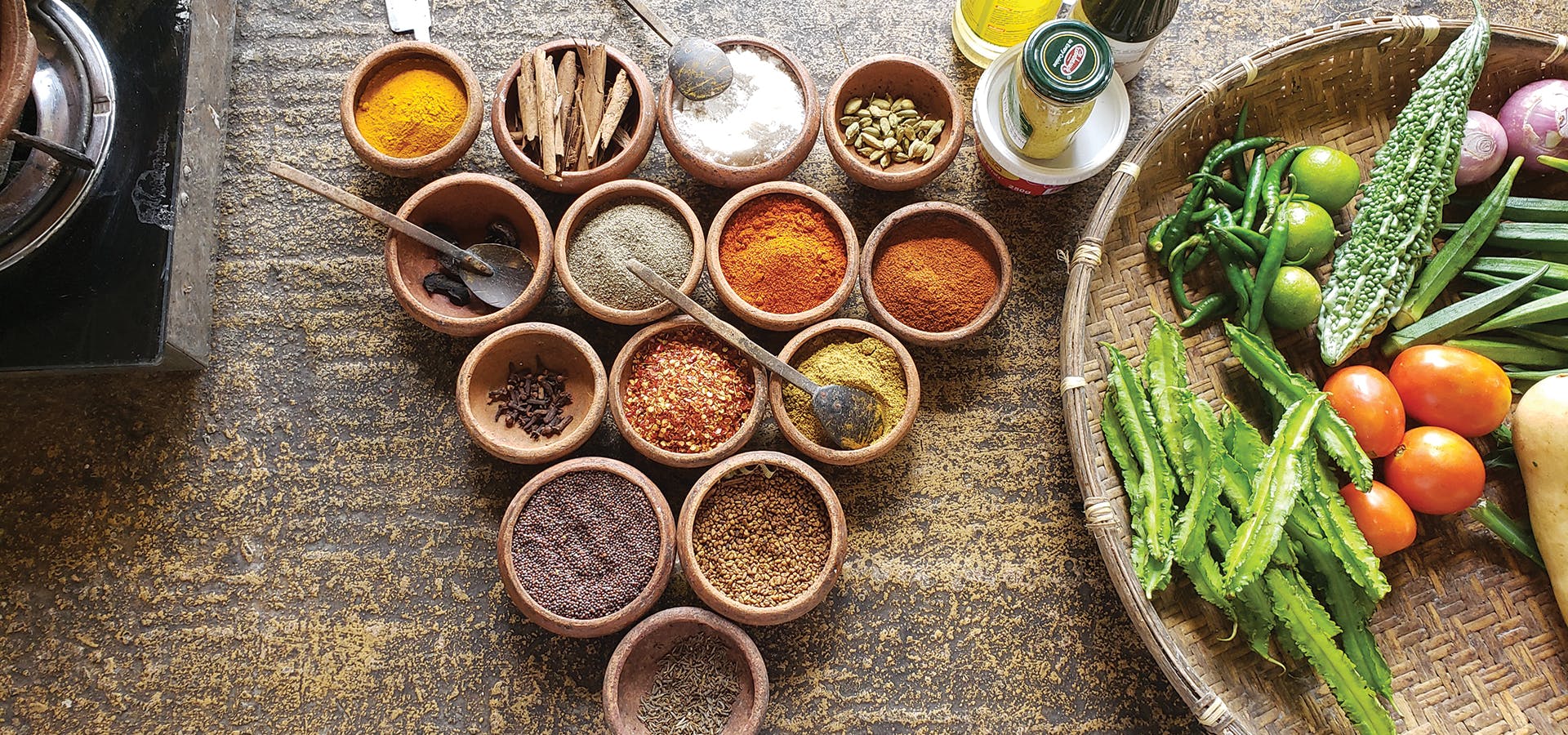
Above: Photo by Lauren Duran
A Warm Welcome
The word serendipity (“happy accident”) comes from Serendib, an old name for Sri Lanka. We weren’t looking for Ananda Dissanayake, yet just minutes into knowing Scott Dunn’s newest guide and guru on the ground in Sri Lanka, we couldn’t imagine life without him. No doubt there is plenty to do in the capital of Colombo, but it wasn’t until we hit the open road that we truly understood more about this wonderful island. The guidebooks do not lie: the Sri Lankan people are amongst the most welcoming people on earth, and their joy at sharing the country’s immense natural and historical wonders with the world is infectious.
Without guidebooks, binoculars, or any sort of GPS, Ananda was a master navigator, naturalist, and historian while expertly delivering us to each of the tiny island’s many delightfully uncrowded treasures. As we made our way across the country, he brilliantly adhered to Lauren’s itinerary, yet allowed plenty of time for beach-walking, wine-tasting, stargazing, tree-admiring, and scenery-gazing, knowing we’d want to squeeze the most from every bucket-list stop. Forgetting nothing and anticipating everything, Ananda was the reassurance we needed to step out each day into a wildly exotic and foreign environment, ready for anything.
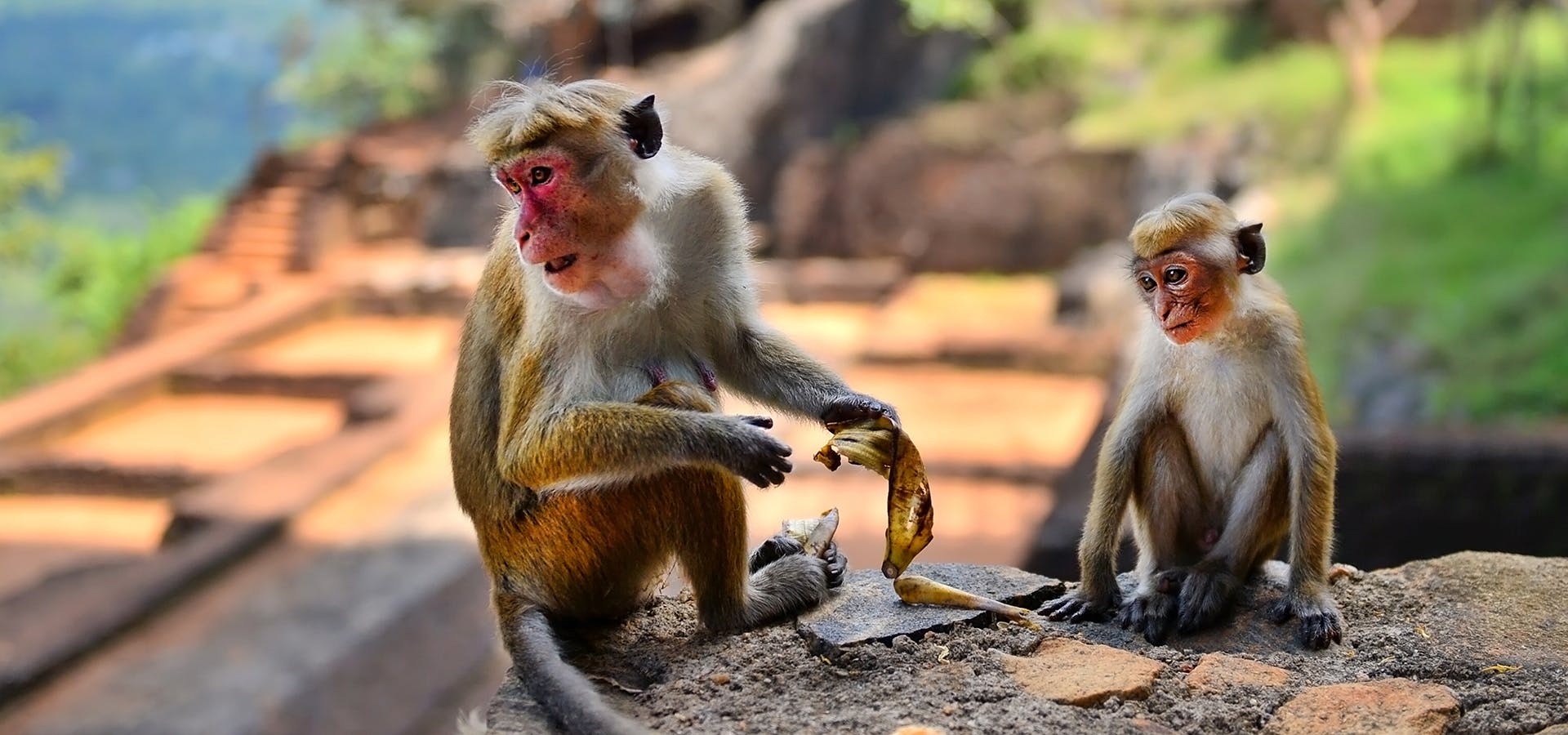
Wildlife Gone Wild
Nestled in a thick rainforest canopy just outside Sri Lanka’s legendary Gal Oya National Park, the 10-room Gal Oya Lodge delivers total immersion into a delightfully uncrowded jungle paradise that would delight even the most experienced safari enthusiast. Our suite came complete with the usual luxury glamping amenities as well as the more thrilling and unusual—a red panic button, otherwise known as a “snake alarm,” to be trigged only when “big” snakes slithered across our floor, and a well-appointed bathroom that was entirely outdoors, enticing us to shower, brush our teeth (and all the rest) in utter solitude, save Sri Lanka’s tropical jungle and its universe of critters big and small.
Somehow, Ananda magically morphed us into a well-oiled safari machine with perfect execution and timing. A sensational new routine had me and my husband more in sync than ever before. Long gone was the usual start-of-day sequence of coffee, tech, food, gym, shower, and first-world fashion choices. I mastered my massive duffle despite it resembling some kind of bipolar consumer nightmare with trekking gear and gadgets alongside my silk robe, heels, and my husband’s favorite little black dress of mine. We happily replaced fragrant hair and beauty products with nuclear-strength bug deterrent and no-frills heavy-duty sunblock. It’s amazing what one will adopt, or forgo, when a million foreign critters are in the mix.
“The Sri Lankan people are amongst the most welcoming people on earth, and their joy at sharing the country’s immense natural and historical wonders with the world is infectious.”
Despite its small size, Sri Lanka is ranked among the top-five biodiversity hotspots in the world. We had stumbled upon a treasure trove of exotic encounters, coming face-to-face with creatures large, small, beautiful, and downright frightening on the eco-diverse island. Of the 91 species of mammals found in Sri Lanka, the majority of wildlife enthusiasts seek out the island’s Asian elephants, sloth bears, leopards, sambar, and wild buffaloes. Yet we also delighted in searching for the rarest mammals such as the red slender loris, toque macaque, and purple-faced langur, which according to IUCN clarifications are endangered due to habitat loss.
By jeep, by boat, and on foot we ventured out into the national parks, seeking to reclaim the lost arts of looking and listening. A giant squirrel scurrying past me on the ground. An electric-green peacock crying out for a love connection. The stone-cold eyes of a Sri Lankan leopard. The sound of 1,000 giant hornets buzzing.
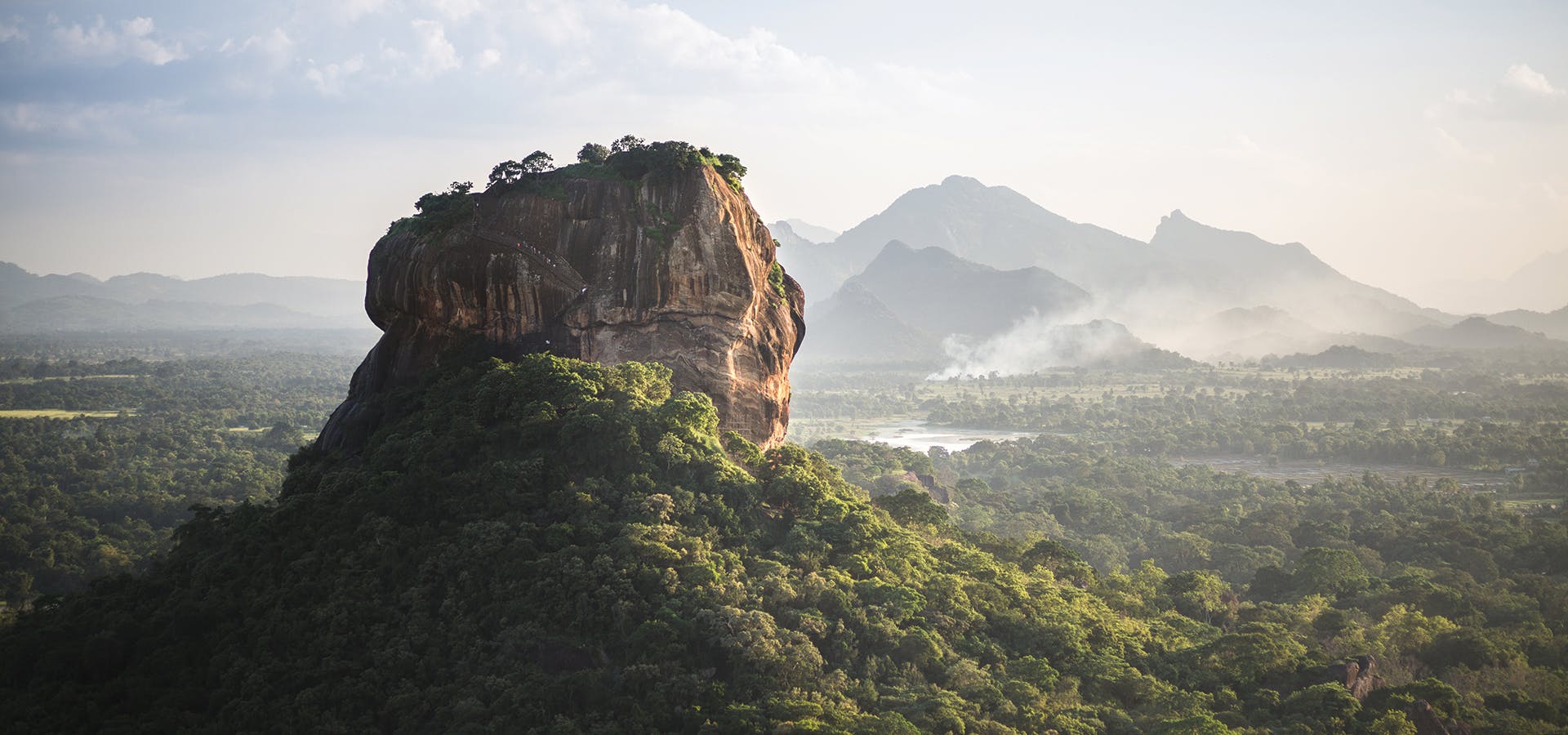
Above: Sigiriya Rock, Photographed by Scott Dunn
The Ancient Ruins
Excitement was palpable arriving at the Cultural Triangle, an area that holds the main focus of the island’s Buddhist heritage, with the remains of various cities, temples, and monuments dating back over 2,300 years. It’s also home to Ulagalla Resort, where perfect days of wildlife encounters, fascinating ruins, and epic hikes were followed by authentic Sri Lankan cuisine at a table set for two in the middle of a peaceful “kamatha”—the threshing ground of a paddy field. Eating an endless array of flavorful dishes with your hands is
not only encouraged, it is part of the deal. As is wildlife, even over a poolside breakfast.
“We’re being robbed!” I screeched and jumped to my feet. The attacker approached with such clandestine dexterity, we never saw him coming until he was upon us stealing our goods. My husband’s quick reflexes kicked in, but it was too late. The scene now looked like the remains of a bar fight—chairs knocked over, broken glass, and my husband flat on the floor. The villain? A dry-zone toque macaque, a species of small monkey endemic to Sri Lanka, that looked on from above in total triumph as he devoured our chocolate croissants.
Far from passive touring, the Ancient City of Anuradapura and all its wonder can be explored on two wheels while cycling through the villages and paddy fields. Of course, no trip to the Cultural Triangle would be complete without a visit to Sigiriya Rock. Known as “Lion Rock” in English, the name of the monument indicates the way in which visitors used to begin their final ascent to the top—through the open jaws and throat (“giriya”) of a lion (“sinha”). A marvel of urban planning, water engineering, horticulture, and arts, it’s no wonder Sigiriya UNESCO declared it a World Heritage site in 1982. It’s also an incredible spot to witness the wild world of snake charming.

Above: Photo Courtesy of Camellia Hills
From Jungle to Dazzling Beach
At the intersection of jungle and India Ocean on Sri Lanka’s southern coast lies Wild Coast Tented Lodge, a place so extraordinary it will stay with you forever. The recently opened lodge is Resplendent Ceylon’s latest addition, made up of 36 luxury cocoon tents surrounded by incredible wildlife. The use of arched fabric structures allows each tent to take on the shape and color of the rocks and boulders that lay scattered nearby, whilst a clever layout in the shape of a leopard’s paw print alludes to the area’s most famous resident.
Here, days are spent exploring another one of Sri Lanka’s premier wildlife areas, Yala National Park, home to one of the highest concentrations of leopards in the world. To my delight our jeep was estrogen infused with expert female guides—a rarity—who approach nature with such skill and detail, from tracking the elusive leopard to breaking down the subtle-yet-complex social behavior of a herd of elephants. Two glorious days were spent utterly alone with our guide, Lauren, learning the art of identifying birds, their behavior and calls, as well as their migration patterns to gain an appreciation for how complex yet entertaining “birding” can be.
Back at the Lodge, memorable nights were filled with lively fireside drinks with other guests from around the world and romantic dinners for two on the beach under the stars.

Above: Photo Courtesy Sri Lanka Tourism
A Solid Gold Finish Line
Further down the coast, the landscape noticeably changed to gorgeous beaches, chic beachside restaurants, and bars nestled under great swathes of palm trees and the infamous Sri Lanka stilt fishermen, local anglers perched on stilts in the morning amid the waves, waiting patiently to get their “fresh catch of the day.” I asked Ananda, “What are the stilt fisherman catching this time of year?” With a smile and a mischievous laugh we had come to adore, he replied, “Tourists mostly.”
The island’s most glorious beaches are found along its eastern-southern coast, and not surprisingly, so are many of its prime hotels. The 17th-century Galle Fort, an UNESCO World Heritage Site, is teeming with history, and the exceptional Amangalla, one of two Aman properties on the island, is set right at the heart of it. Our own private butler, Karismma, personally looked after us, arranging whatever we wanted: a candlelight bath, a private dinner in the garden, private shopping, and a classic car ride around Galle. The trip’s grand finale occurred aboard a private Cessna piloted by F-Airways. Our pilots dazzled us with heart-pounding aerial acrobatics, conservation information, fun facts, and stunning coastal eye candy as we looked out for whales, dolphins, elusive turtles, and other creatures enjoying their share of the tropical sun.
That last night in Sri Lanka, we disappeared into Amangalla’s Baths Spa, a whole other universe of hydrotherapy chambers, plunge pools, and revitalizing treatments including a hybrid of Thai massage and Ayurveda treatments. Over our sad goodbyes at the airport, Ananda shared, “Thank you so much for visiting our beautiful country in our time of need. When guests arrive on our shores they become family. This is our way and it has been our way from the beginning of time.”
How could we ever do more for Ananda than he had done for us? Sometimes, doing the right thing is just about showing up at the right place at the right time in support of a global community.
If the country of Sri Lanka posted a want ad today, it might read something like this:
Ready to Take a Chance? Small tear-shaped island seeks intelligent, intrepid explorers who value exotic adventure, dazzling beaches, spectacular wildlife, epic food, and ancient ruins. I may be six times smaller than California, but my diverse landscapes sweep from mountainous jungle terrain, to roaring waterfalls and electric-green tea fields, down to pristine white sand coastlines. No matter what kind of escape you’re looking for, I am determined to impress. You’ll find me delightfully charming and impossibly romantic, absolutely gorgeous, and plenty wild. No experience necessary.
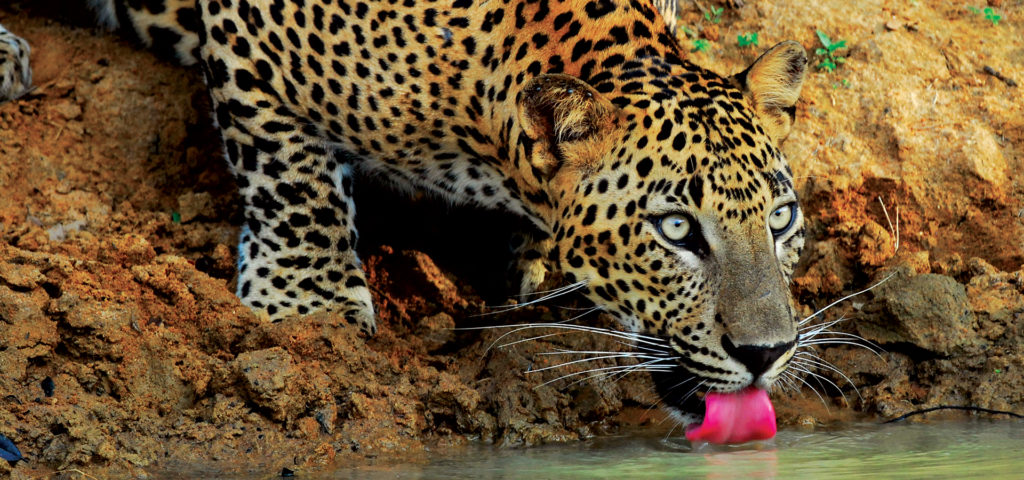
We had been warned that wild Sri Lanka is not to be underestimated.
With possibly the best views of Sri Lanka’s crisp Hill Country, Camellia Hills’ luxurious five-bedroom hotel is nestled among tea plantations, overlooking the famous island-dotted Castlereagh Reservoir. Beyond the luxurious bungalows and stunning views, the boutique sensation is also a popular springboard to one of the country’s most meaningful and heart-racing climbing experiences. At the sight of our guide’s bare feet and flip flops, my husband and I impulsively tossed aside our matching his-and-hers leech socks and the recommended impenetrable wellies. Surely our hiking boots would do.
There are around 5,500 steep steps on the way to the top of Sri Pada (a.k.a. Adam’s Peak), the fifth-tallest but most sacred mountain in Sri Lanka. For over a millennium, the Peak has been a mecca for people of various beliefs on the island. Sri Pada, meaning “sacred footprint,” is believed to have been left by the Buddha when he was going to paradise. For Hindus, it is Lord Shiva’s footprint. When asking Christians and Muslims, they would say it is the footprint of Adam as he was banished from the Garden of Eden.
Today, thousands of pilgrims and visitors alike climb in the dark together, with only candlelight and the full moon to guide their slow and steady way. Backs sore, legs burning, they carry on for hours up the lush green mountain until they’ve reached the summit. Their reward? A sense of triumph unlike any other, as one of the most gorgeous sunrises imaginable slowly illuminates the endless waves of mountains in every direction. There are times like this when Sri Lanka is so unbelievably gorgeous it can be overwhelming. Will it stop at skin deep? Don’t bet on it.
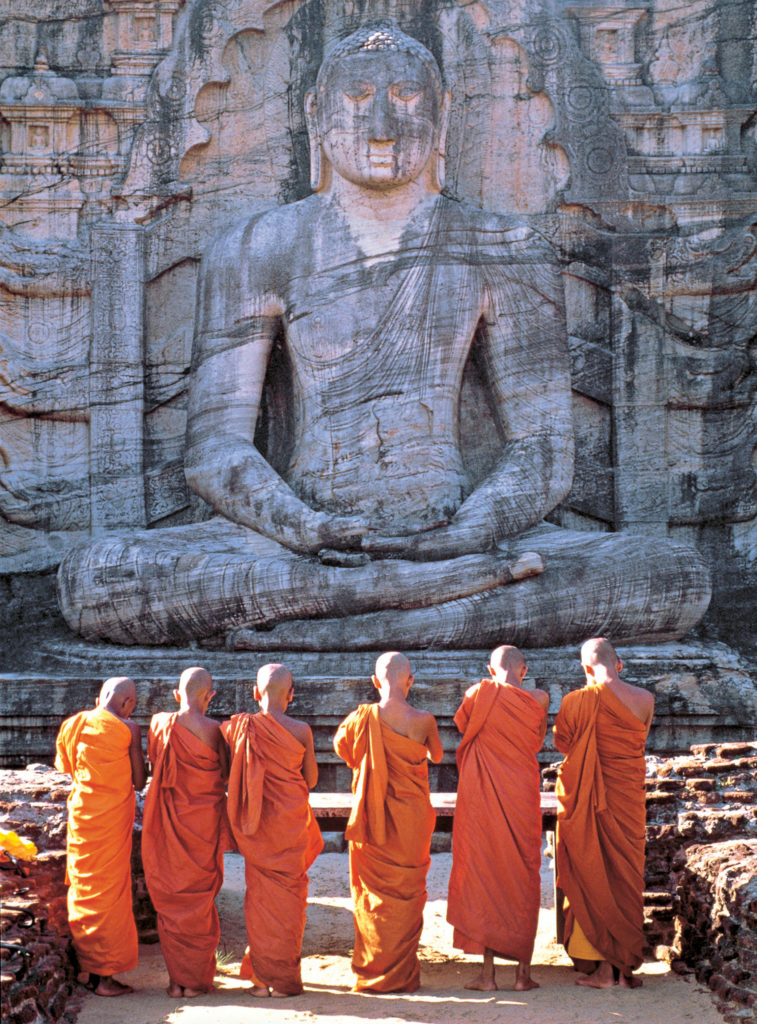
Leeches wait on jungle vegetation, ready and eager to attach themselves to clothes and then lower legs, where they can weave their way through socks and into trekking boots, often locking down, breaking the skin, and making a meal of one’s feet. We stopped to hydrate and watched our guide casually flicking hundreds of slithery critters off his exposed skin. We looked a bit fearfully into each other’s eyes and then we looked down.
When faced with slippery, blood-sucking little devils crawling all over you, there’s a moment of relief that they are far smaller and more harmless looking than imagined. Yet knowing their life’s purpose is to break the skin and gorge on blood, we began hopping around like fools trying to shake them off, followed by hours of reassuring examinations and picking at each other like two monkeys. No first-world freak-out; just another utterly foreign experience conquered together. It left us laughing in a way that felt new, full of reckless abandon, a dash of romance, and total disregard for any kind of care in the world.
A rare, once-in-a-decade epic journey like this is best when active and engaged, never scripted nor sterile. That said, being temporarily soaked, muddy, lost, and/or hysterical came with the territory.
Did I lose you at leeches? Let me assure you: Take a chance on Sri Lanka. It willdeliver.
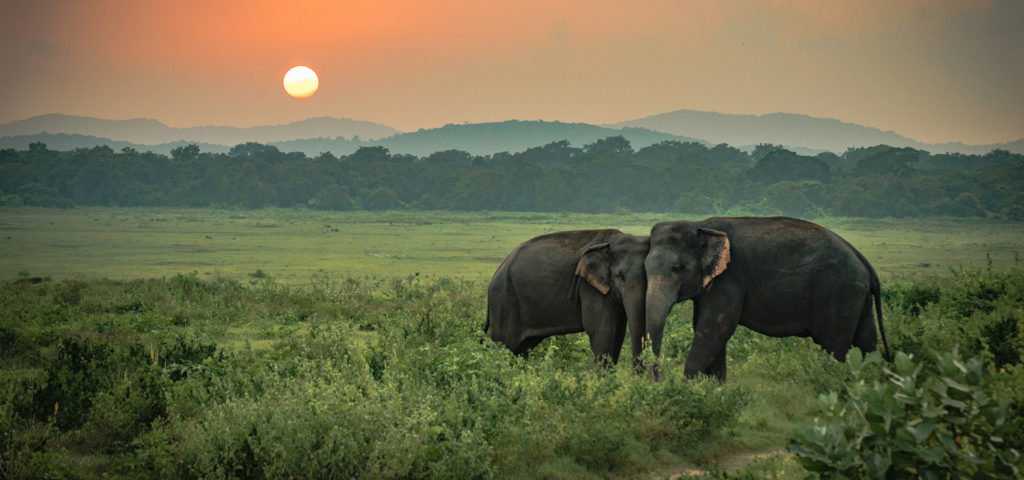
The Background
When Ananda Dissanayake moved from rural Sri Lanka to the capital Colombo as a young teen, he found his first job in hospitality as a kitchen aid in a popular hotel, making $4 a month as a kitchen helper. In 2019 at the age of 53, having advanced to expert naturalist and tour guide, he felt he had finally hit the jackpot. His native land was no longer a best-kept secret; visitors from all over the world were arriving daily to enjoy the country’s endless beaches, timeless ruins, welcoming people, killer surf, flavorful food, newfound peace, and improved infrastructure.
Tourism was doing more than putting food on the table. Ananda could finally afford a few personal priorities—a stylish wardrobe, second vehicle, and construction of new guesthouse facilities on his property to supplement his income. He delighted in spoiling his wife and four daughters with the finer things like two expensive imported kittens, Bella and Beeshu, and a new swimming pool.
Then, Sri Lanka suffered a series of bombings on Easter Sunday, 2019.
Hurricanes, fires, floods, and terrorist attacks—acts of god and people can bring even the most vibrant and sophisticated destination to its knees. After the bombings in Sri Lanka, the flow of travelers to the once-coveted island destination was reduced to a trickle. Half-a-million families across the island could no longer count on tourism for daily living. Fortunately, people around the world wanted to help. But how?
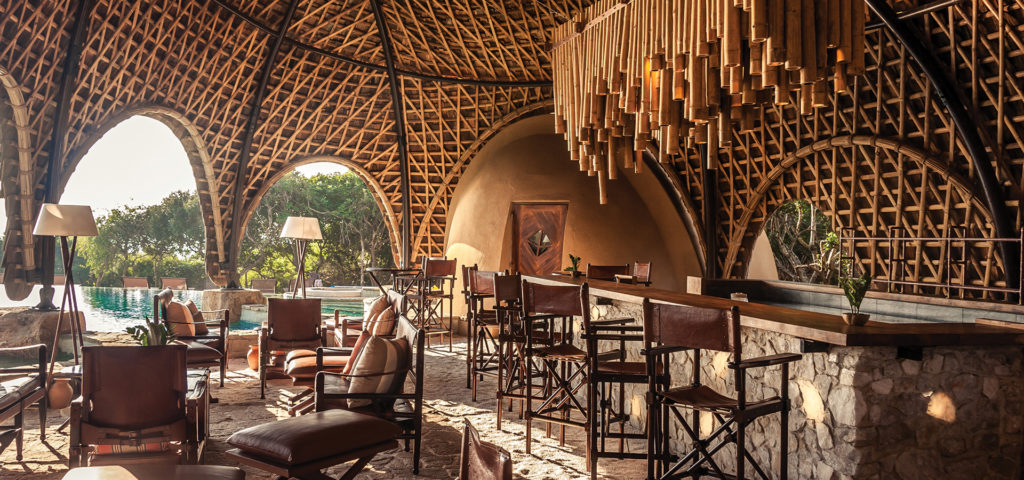
The California Connection
Scott Dunn Expedition Specialist Lauren Duran is my kind of no-guts-no-glory woman. At the adventure outfit’s U.S. headquarters in Southern California, Lauren spends her days expertly masterminding bespoke global excursions around the globe for couples, families, solo artists—no matter your travel time, speed, or endgame. Time in the field isn’t fantasy for Lauren and her colleagues at Scott Dunn; it is a key component in the company’s wildly successful DNA.
Post-bombings in Sri Lanka, the California native and avid surfer hit the ground running on behalf of Scott Dunn, proudly showing support, fine-tuning her local knowledge, and fortifying solid relationships and employment with the country’s most experienced operators. No trip comes without risk, but with Scott Dunn’s expert pre-trip protocol, detailed itineraries, state-of-the-art technology, and agile experts on the ground, even the most exotic destinations can be explored and enjoyed.
As Lauren and her colleagues have keenly identified, choosing to visit destinations on the road to economic recovery—like Sri Lanka—stands for something. In the aftermath of the media frenzy and travel warnings, there are real people striving to get on with daily life. Real people in tourism and other industries in need of work. Why visit any number of overcrowded destinations, when Sri Lanka is once again open for business and eager to thrill?
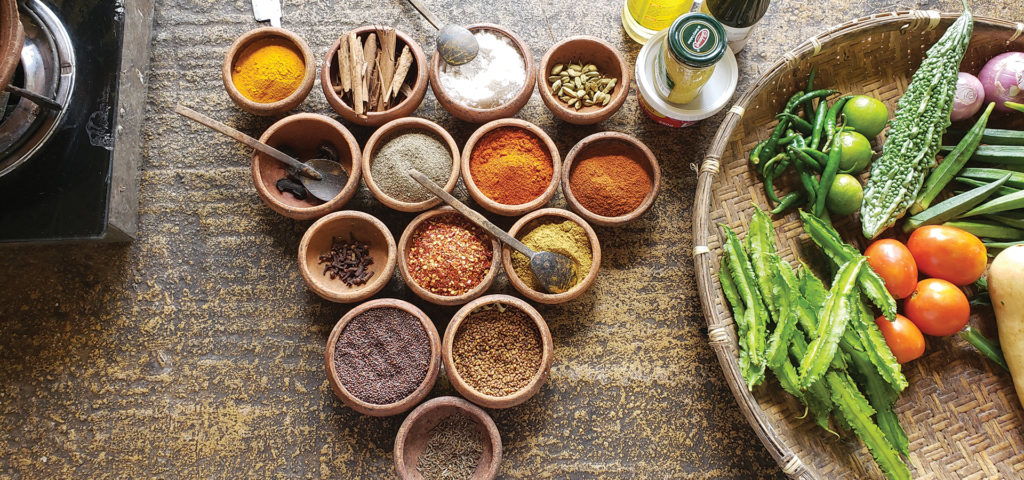
A Warm Welcome
The word serendipity (“happy accident”) comes from Serendib, an old name for Sri Lanka. We weren’t looking for Ananda Dissanayake, yet just minutes into knowing Scott Dunn’s newest guide and guru on the ground in Sri Lanka, we couldn’t imagine life without him. No doubt there is plenty to do in the capital of Colombo, but it wasn’t until we hit the open road that we truly understood more about this wonderful island. The guidebooks do not lie: the Sri Lankan people are amongst the most welcoming people on earth, and their joy at sharing the country’s immense natural and historical wonders with the world is infectious.
Without guidebooks, binoculars, or any sort of GPS, Ananda was a master navigator, naturalist, and historian while expertly delivering us to each of the tiny island’s many delightfully uncrowded treasures. As we made our way across the country, he brilliantly adhered to Lauren’s itinerary, yet allowed plenty of time for beach-walking, wine-tasting, stargazing, tree-admiring, and scenery-gazing, knowing we’d want to squeeze the most from every bucket-list stop. Forgetting nothing and anticipating everything, Ananda was the reassurance we needed to step out each day into a wildly exotic and foreign environment, ready for anything.
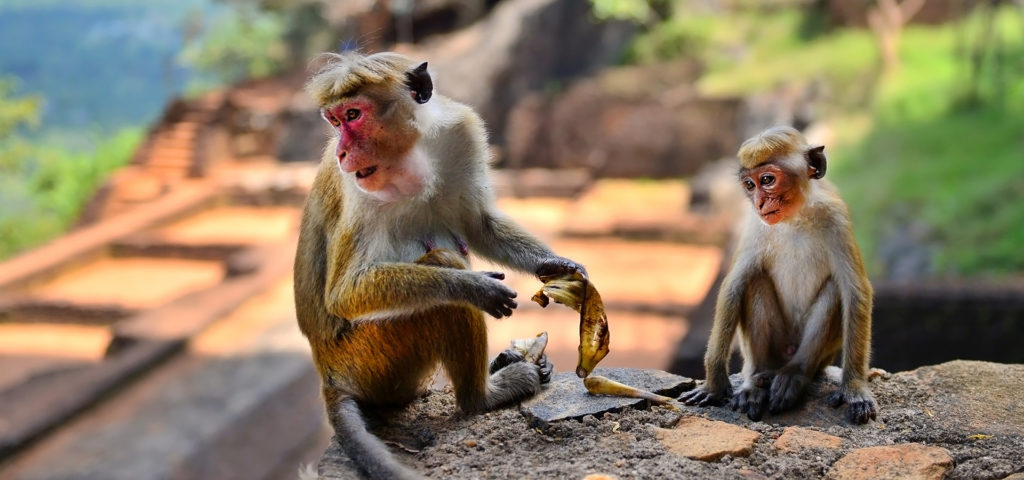
Wildlife Gone Wild
Nestled in a thick rainforest canopy just outside Sri Lanka’s legendary Gal Oya National Park, the 10-room Gal Oya Lodge delivers total immersion into a delightfully uncrowded jungle paradise that would delight even the most experienced safari enthusiast. Our suite came complete with the usual luxury glamping amenities as well as the more thrilling and unusual—a red panic button, otherwise known as a “snake alarm,” to be trigged only when “big” snakes slithered across our floor, and a well-appointed bathroom that was entirely outdoors, enticing us to shower, brush our teeth (and all the rest) in utter solitude, save Sri Lanka’s tropical jungle and its universe of critters big and small.
Somehow, Ananda magically morphed us into a well-oiled safari machine with perfect execution and timing. A sensational new routine had me and my husband more in sync than ever before. Long gone was the usual start-of-day sequence of coffee, tech, food, gym, shower, and first-world fashion choices. I mastered my massive duffle despite it resembling some kind of bipolar consumer nightmare with trekking gear and gadgets alongside my silk robe, heels, and my husband’s favorite little black dress of mine. We happily replaced fragrant hair and beauty products with nuclear-strength bug deterrent and no-frills heavy-duty sunblock. It’s amazing what one will adopt, or forgo, when a million foreign critters are in the mix.
“The Sri Lankan people are amongst the most welcoming people on earth, and their joy at sharing the country’s immense natural and historical wonders with the world is infectious.”
Despite its small size, Sri Lanka is ranked among the top-five biodiversity hotspots in the world. We had stumbled upon a treasure trove of exotic encounters, coming face-to-face with creatures large, small, beautiful, and downright frightening on the eco-diverse island. Of the 91 species of mammals found in Sri Lanka, the majority of wildlife enthusiasts seek out the island’s Asian elephants, sloth bears, leopards, sambar, and wild buffaloes. Yet we also delighted in searching for the rarest mammals such as the red slender loris, toque macaque, and purple-faced langur, which according to IUCN clarifications are endangered due to habitat loss.
By jeep, by boat, and on foot we ventured out into the national parks, seeking to reclaim the lost arts of looking and listening. A giant squirrel scurrying past me on the ground. An electric-green peacock crying out for a love connection. The stone-cold eyes of a Sri Lankan leopard. The sound of 1,000 giant hornets buzzing.
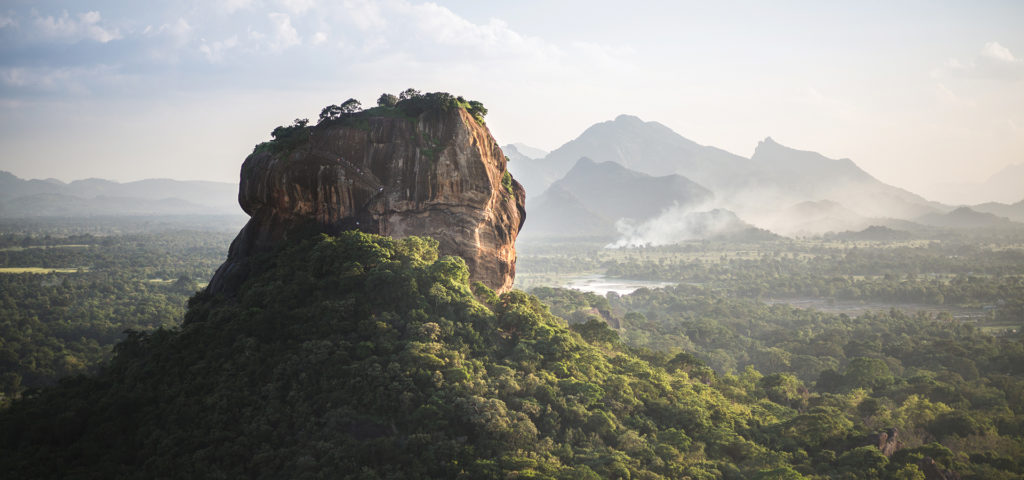
The Ancient Ruins
Excitement was palpable arriving at the Cultural Triangle, an area that holds the main focus of the island’s Buddhist heritage, with the remains of various cities, temples, and monuments dating back over 2,300 years. It’s also home to Ulagalla Resort, where perfect days of wildlife encounters, fascinating ruins, and epic hikes were followed by authentic Sri Lankan cuisine at a table set for two in the middle of a peaceful “kamatha”—the threshing ground of a paddy field. Eating an endless array of flavorful dishes with your hands is
not only encouraged, it is part of the deal. As is wildlife, even over a poolside breakfast.
“We’re being robbed!” I screeched and jumped to my feet. The attacker approached with such clandestine dexterity, we never saw him coming until he was upon us stealing our goods. My husband’s quick reflexes kicked in, but it was too late. The scene now looked like the remains of a bar fight—chairs knocked over, broken glass, and my husband flat on the floor. The villain? A dry-zone toque macaque, a species of small monkey endemic to Sri Lanka, that looked on from above in total triumph as he devoured our chocolate croissants.
Far from passive touring, the Ancient City of Anuradapura and all its wonder can be explored on two wheels while cycling through the villages and paddy fields. Of course, no trip to the Cultural Triangle would be complete without a visit to Sigiriya Rock. Known as “Lion Rock” in English, the name of the monument indicates the way in which visitors used to begin their final ascent to the top—through the open jaws and throat (“giriya”) of a lion (“sinha”). A marvel of urban planning, water engineering, horticulture, and arts, it’s no wonder Sigiriya UNESCO declared it a World Heritage site in 1982. It’s also an incredible spot to witness the wild world of snake charming.
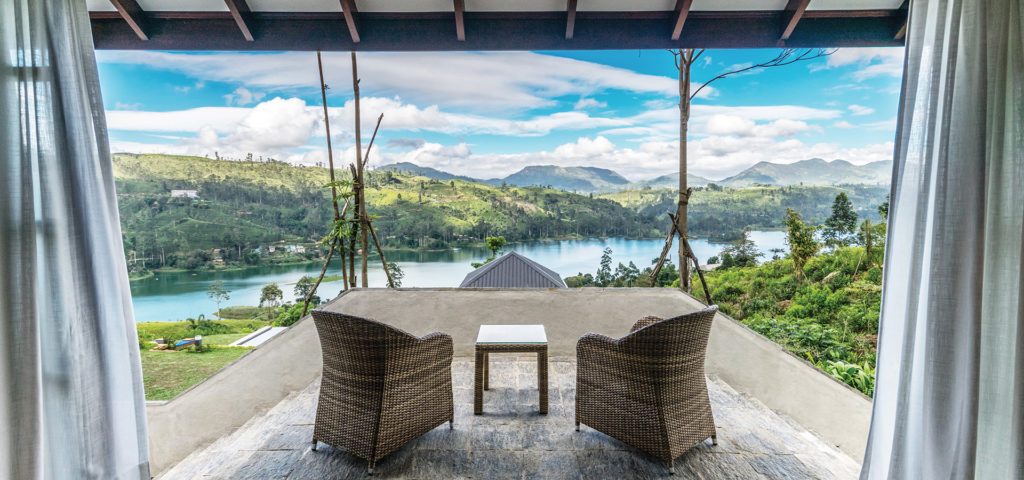
From Jungle to Dazzling Beach
At the intersection of jungle and India Ocean on Sri Lanka’s southern coast lies Wild Coast Tented Lodge, a place so extraordinary it will stay with you forever. The recently opened lodge is Resplendent Ceylon’s latest addition, made up of 36 luxury cocoon tents surrounded by incredible wildlife. The use of arched fabric structures allows each tent to take on the shape and color of the rocks and boulders that lay scattered nearby, whilst a clever layout in the shape of a leopard’s paw print alludes to the area’s most famous resident.
Here, days are spent exploring another one of Sri Lanka’s premier wildlife areas, Yala National Park, home to one of the highest concentrations of leopards in the world. To my delight our jeep was estrogen infused with expert female guides—a rarity—who approach nature with such skill and detail, from tracking the elusive leopard to breaking down the subtle-yet-complex social behavior of a herd of elephants. Two glorious days were spent utterly alone with our guide, Lauren, learning the art of identifying birds, their behavior and calls, as well as their migration patterns to gain an appreciation for how complex yet entertaining “birding” can be.
Back at the Lodge, memorable nights were filled with lively fireside drinks with other guests from around the world and romantic dinners for two on the beach under the stars.
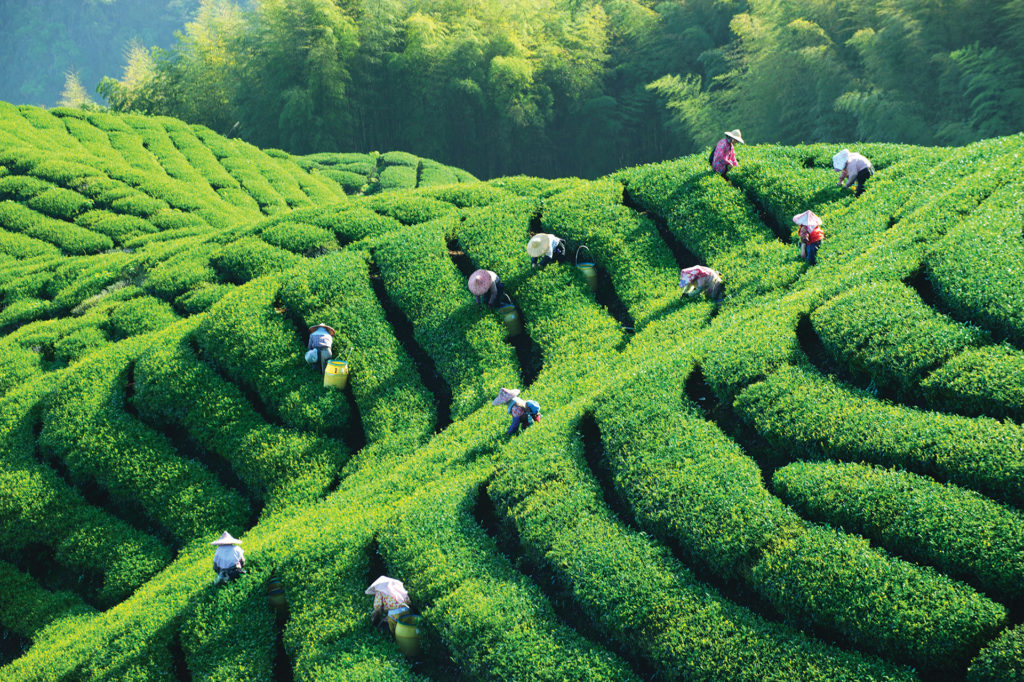
A Solid Gold Finish Line
Further down the coast, the landscape noticeably changed to gorgeous beaches, chic beachside restaurants, and bars nestled under great swathes of palm trees and the infamous Sri Lanka stilt fishermen, local anglers perched on stilts in the morning amid the waves, waiting patiently to get their “fresh catch of the day.” I asked Ananda, “What are the stilt fisherman catching this time of year?” With a smile and a mischievous laugh we had come to adore, he replied, “Tourists mostly.”
The island’s most glorious beaches are found along its eastern-southern coast, and not surprisingly, so are many of its prime hotels. The 17th-century Galle Fort, an UNESCO World Heritage Site, is teeming with history, and the exceptional Amangalla, one of two Aman properties on the island, is set right at the heart of it. Our own private butler, Karismma, personally looked after us, arranging whatever we wanted: a candlelight bath, a private dinner in the garden, private shopping, and a classic car ride around Galle. The trip’s grand finale occurred aboard a private Cessna piloted by F-Airways. Our pilots dazzled us with heart-pounding aerial acrobatics, conservation information, fun facts, and stunning coastal eye candy as we looked out for whales, dolphins, elusive turtles, and other creatures enjoying their share of the tropical sun.
That last night in Sri Lanka, we disappeared into Amangalla’s Baths Spa, a whole other universe of hydrotherapy chambers, plunge pools, and revitalizing treatments including a hybrid of Thai massage and Ayurveda treatments. Over our sad goodbyes at the airport, Ananda shared, “Thank you so much for visiting our beautiful country in our time of need. When guests arrive on our shores they become family. This is our way and it has been our way from the beginning of time.”
How could we ever do more for Ananda than he had done for us? Sometimes, doing the right thing is just about showing up at the right place at the right time in support of a global community.




